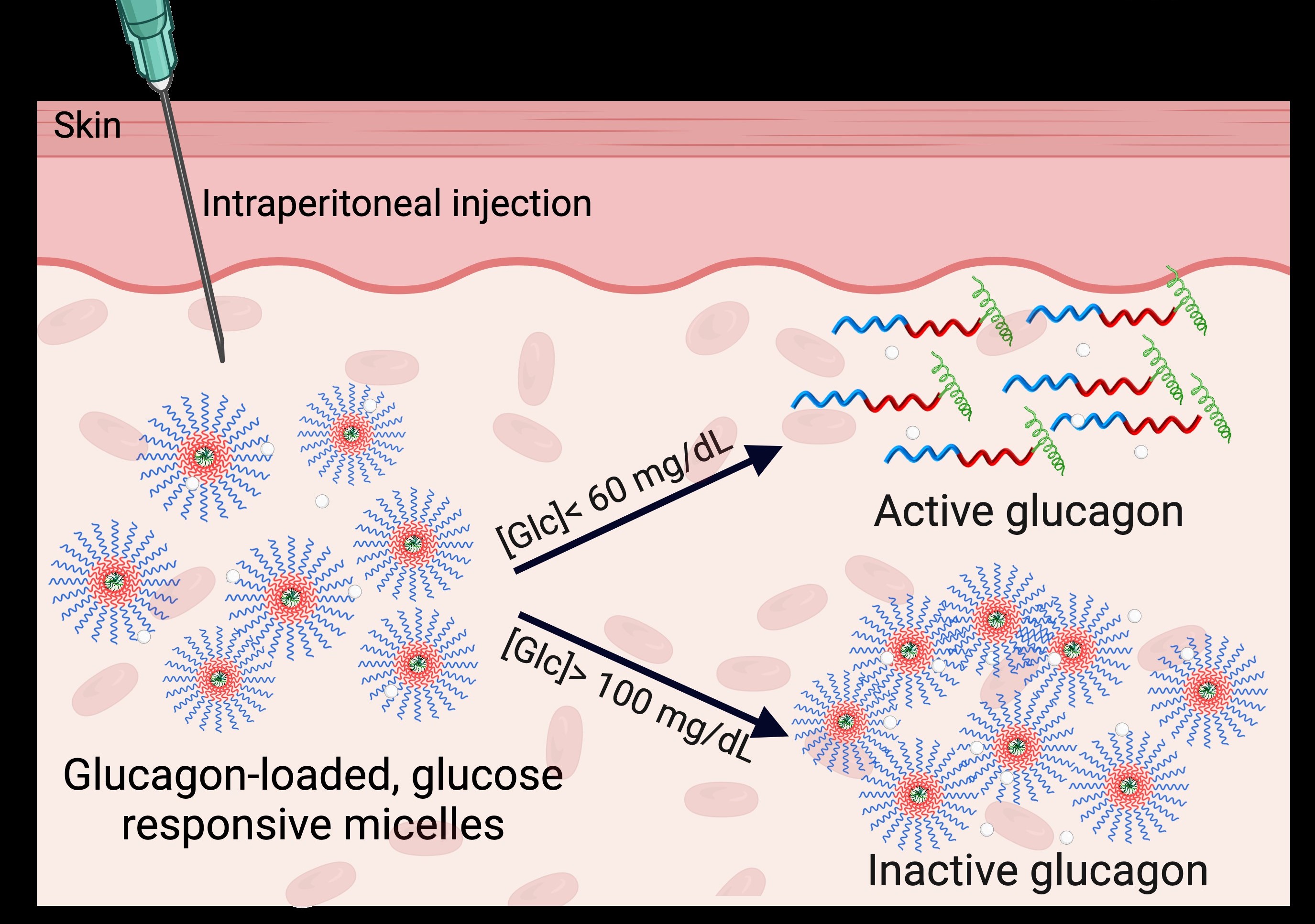In recognition of Breast Cancer Awareness month, Ixcela, The Internal Fitness™ Company, in collaboration with Roper St. Francis Healthcare, today announced the Ixcela Cancer Support Program.
Month: October 2024
Clinical Trial Shows Synthetic Cannabis Reduces Agitation in Alzheimer’s Disease
In a study led by the Johns Hopkins University School of Medicine and Tufts University School of Medicine, researchers show that a pill form of the drug dronabinol, an FDA-approved synthetic version of marijuana’s main ingredient, THC, reduces agitation in patients with Alzheimer’s by an average of 30%.
AIP Coverage of 2024 Nobel Prize in Physics
The Nobel Prize in physics is scheduled to be awarded Tuesday, Oct. 8, at 5:45 a.m. ET, and AIP is here to help news outlets and reporters prepare. Experts from AIP and AIP Publishing will be available the morning of the announcement to comment on the new laureates, their accomplishments, and the importance of the Nobel award to the world of science at large.
Ohio State professor named Blavatnik National Awards finalist
David Nagib, an organic chemist and a professor of chemistry and biochemistry at The Ohio State University, has been selected as a finalist for the 2024 Blavatnik National Awards for Young Scientists.
Case Western Reserve, Vanderbilt universities to develop incisionless prostate surgery using MRI and robotics
Researchers at Case Western Reserve University and Vanderbilt University are pioneering a new approach to prostate cancer surgery by combining advanced robotics and “low-field” MRI technology.
60% Lighter Automotive Air Duct Developed, Set for Commercialization: Reduces Noise, Enhances Safety
The Korea joint research team has achieved a groundbreaking advancement in the manufacturing technology of air ducts for automotive cockpit modules.
Case Western Reserve, Vanderbilt universities to develop incisionless prostate surgery using MRI and robotics
Researchers at Case Western Reserve University and Vanderbilt University are pioneering a new approach to prostate cancer surgery by combining advanced robotics and “low-field” MRI technology.

Dockworkers strike to disrupt supply chains
A prolonged strike favors the longshore industry employers, allowing them to raise prices and benefit from delays and bottlenecks, according to a University of Miami management science specialist.
Kazia Therapeutics Announces Presentation of Promising Phase I Data Evaluating Concurrent Paxalisib and Radiation Therapy in Patients with Solid Tumor Brain Metastases or Leptomeningeal Metastases Harboring PI3K Pathway Mutations
Kazia Therapeutics Limited (NASDAQ: KZIA), an oncology-focused drug development company, announced the presentation of data from a Phase I study (NCT04192981) evaluating concurrent paxalisib and radiation therapy (RT) in patients for the treatment of solid tumor brain metastases (BM) or leptomeningeal metastases (LM) harboring PI3K pathway mutations at the American Society for Radiation Oncology 66th Annual Meeting (ASTRO 2024), which is taking place from September 29 – October 2, 2024, in Washington, D.C.

A new injectable to prevent and treat hypoglycemia
To prevent and treat hypoglycemia, researchers in ACS Central Science report encapsulating the hormone glucagon. In mouse trials, the nanocapsules activated when blood sugar levels dropped dangerously low and quickly restored glucose levels.
Turning plants into workout supplement bio-factories
It’s important to eat your veggies, but some essential vitamins and nutrients can only be found in animals, including certain amino acids and peptides. But, in a proof-of-concept study published in ACS’ Journal of Agricultural and Food Chemistry, researchers developed a method to produce creatine, carnosine and taurine — all animal-based nutrients and common workout supplements — right inside a plant. The system allows for different synthetic modules to be easily stacked together to boost production.

Extreme heat impacts daily routines and travel patterns
Research shows a clear shift in transportation choices under extreme heat conditions. Car use increases, while trips made by walking, biking and public transit drop significantly. On average, public transit trips fall by nearly 50% on extreme heat days as individuals seek relief in air-conditioned private vehicles.
Big gaps seen in home medical test use by older adults
With free COVID-19 rapid tests now shipping to households nationwide, and many other types of at-home medical tests now available, a new study looks at what older adults think about the ability to get answers to medical questions without leaving home.
Viruses found hiding in lungs’ immune cells long after initial illness
A study by researchers at WashU Medicine shows that respiratory viruses can hide out in immune cells in the lungs long after the initial symptoms of an infection have resolved, creating a persistently inflammatory environment that promotes the development of chronic lung diseases such as asthma.
Nanopillars create tiny openings in the nucleus without damaging cells
UC San Diego researchers have created an array of nanopillars that can breach the nucleus of a cell—the compartment that houses our DNA—without damaging the cell’s outer membrane. This new “gateway into the nucleus” could open new possibilities in gene therapy, where genetic material needs to be delivered directly into the nucleus, as well as drug delivery and other forms of precision medicine.
KIST Accelerates the Realization of a Circular Economy with the Development of Polyethylene Biodegrading Enzyme
Dr. Ahn, Jung Ho’s research team at the Clean Energy Research Center of the Korea Institute of Science and Technology (KIST) has developed a technology that uses enzymes derived from microorganisms to biodegrade polyethylene.
Do Coyotes Have Puppy Dog Eyes? New Study Reveals Wild Canines Share Dog’s Famous Expression
New research from Baylor University reveals that coyotes, like domestic dogs, have the ability to produce the famous “puppy dog eyes” expression. The study – “Coyotes can do ‘puppy dog eyes’ too: Comparing interspecific variation in Canis facial expression muscles,” published in the Royal Society Open Science – challenges the hypothesis that this facial feature evolved exclusively in dogs as a result of domestication.
Color, Color Everywhere – Mother Nature Shares a Mosaic of Bright Colors This Fall
Cool, crisp weather can trigger the urge to get out and go leaf peeping and this year could be a particularly good year to hit the road and admire New England’s spectacular foliage season. According to Steve Roberge, Extension forestry specialist and professor of natural resources at the University of New Hampshire, we should expect to see Mother Nature put on a brightly colored show this fall.
History Repeats: How the dockworkers strike is the latest labor issue for longshoring
Howard Stanger, PhDProfessor, Management & Marketing Canisius University Available for expert comment/insight on the following: Historical perspective on longshoring labor issues and how they relate to the current strike Role of technological change and labor substitution in modern labor disputes Analysis…
Children’s Health and UT Southwestern break ground on new Dallas pediatric campus, announce $100 million donation from The Rees-Jones Foundation
Children’s Health and UT Southwestern Medical Center broke ground today on a $5 billion pediatric health campus to replace the existing Children’s Medical Center Dallas. The new campus will encompass more than 4.7 million square feet of construction, including a new pediatric hospital as its centerpiece.
سؤال وجواب من مايو كلينك: هل يساعد الكولاجين حقًا في محاربة التجاعيد والشيخوخة؟
الدكتورة دون ماري آر ديفيس، طبيبة الأمراض الجلدية في مايو كلينك في روتشستر، مينيسوتا، توضح ما هو الكولاجين وكيف يُستخدم.
Perguntas e Respostas da Mayo Clinic: O colágeno realmente ajuda a combater as rugas e o envelhecimento?
A Dra. Dawn Marie R. Davis, dermatologista da Mayo Clinic em Rochester, Minnesota, esclarece sobre o que é o colágeno e como ele é utilizado.
Cleveland Clinic researchers build first large-scale atlas of how immune cells react to mutations during cancer immunotherapy
A Cleveland Clinic-led research collaboration between Timothy Chan, MD, PhD, Chair of Cleveland Clinic’s Global Center for Immunotherapy, and Bristol Myers Squibb has published the most comprehensive overview to date of how our immune system reshapes tumor architecture in response to immune checkpoint therapy.
The eight-year study, published in Nature Medicine, outlines how cancer immunotherapy induces tumor recognition through neoantigens to reshape the tumor ecosystem.
Do Customers Perceive AI-Written Communications as Less Authentic?
How do consumers feel about robots generating emotionally charged marketing content? That’s the question a New York Institute of Technology professor raises in a new Journal of Business Research study.
Preguntas y respuestas de Mayo Clinic: ¿El colágeno realmente ayuda a combatir las arrugas y el envejecimiento?
Estoy viendo anuncios de colágeno en polvo y suplementos en todas partes, y mi hermana me asegura que todo esto combate las arrugas. ¿El colágeno realmente ayuda a prevenir el envejecimiento? ¿Qué es exactamente el colágeno?
A new era of research comes into focus
As the upgrade of the Advanced Photon Source nears completion at Argonne National Laboratory, scientists anticipate the experimental possibilities.
Adeline and Robert Mah donate another $20 million toward Falling Leaves Foundation Medical Innovation Building
Irvine, Calif., Oct. 1, 2024 — Dr. Robert A. Mah and Dr. Adeline Yen Mah and their Falling Leaves Foundation are giving $20 million more to the University of California, Irvine to provide support for the Falling Leaves Foundation Medical Innovation Building and centers to be located in the state-of-the-art medical research facility, which will expand the global reach and impact of the campus’s advanced cross-disciplinary teaching and translational research achievements.
Researchers reverse drug resistance in pancreatic cancer model
Cancer cells frequently overhaul their surroundings, making tumors stiffer than nearby healthy tissue. While tumor stiffening makes some cancers easier to detect — this is why physicians feel for hard lumps in the body — it can also ramp up tumor growth and drug resistance. New research suggests that these detrimental changes are not set in stone, however.
Political scientist explores extending constitutional duties to private actors
New research from Christina Bambrick, the Filip Family Assistant Professor of Political Science at the University of Notre Dame, explores the nonconventional idea that each of us, as private citizens, may be responsible for upholding the constitutional rights of our fellow citizens. She examines constitutional politics across the globe to explore these different approaches to balancing rights and responsibilities in a democratic society.
AMERICAN SOCIETY OF NEPHROLOGY LAUNCHES THE GLOMERULAR DISEASES COLLABORATIVE (GD-C) TO ADDRESS GAPS IN KNOWLEDGE AND BARRIERS IN THE CARE OF PEOPLE WITH GLOMERULAR DISEASES
Chronic kidney disease is a progressive condition that affects more than 10% of the general population worldwide, amounting to 800 million individuals.1 Glomerular diseases (GD), excluding diabetic nephropathy, account for approximately 25% of the cases of kidney diseases worldwide.2 Given the magnitude of long-term morbidity from GD— particularly the frequent manifestation in younger patients—diagnosing it efficiently and optimizing management to control diseases and prevent progressive kidney diseases is paramount.
Cal State Fullerton Earns 2024 Seal of Excelencia for Advancing Latinx Student Success
Cal State Fullerton was recertified with the nonprofit Excelencia in Education’s 2024 Seal of Excelencia, a prestigious certification for U.S. institutions that go beyond Latinx student enrollment and intentionally serve their Latinx student populations.
$5M Grant Launches Six-State Research Initiative to Reduce Childhood Obesity
In the past four decades, the rate of childhood obesity has quadrupled, increasing kids’ risk of serious conditions. A new research center based at University of Utah Health aims to reduce childhood obesity throughout the Mountain West, focusing on rural and small-town communities.
Sociologists estimate the impact of Alaska’s universal cash payments on birth outcomes
A sociological investigation estimated the effects of Alaska’s universal cash transfer program on newborn health outcomes using data spanning 28 years.
Radiant Stars at the Heart of a Cosmic Rose
Cradled within the fiery petals of the Rosette Nebula is NGC 2244, the young star cluster which it nurtured. The cluster’s stars light up the nebula in vibrant hues of red, gold and purple, and opaque towers of dust rise from the billowing clouds around its excavated core. This image, captured by the 570-megapixel Dark Energy Camera, is being released in celebration of NOIRLab’s fifth anniversary.
Cerro Tololo celebra aniversario de NOIRLab con una romántica rosa cósmica
Entre los ardientes pétalos de la Nebulosa Roseta se encuentra el joven cúmulo estelar NGC 2244, cuyas estrellas alimentan la nebulosa iluminándola con vibrantes tonos de rojo, oro y púrpura, junto con opacas torres de polvo que se elevan desde las ondulantes nubes que rodean su núcleo. Esta imagen, captada por la Cámara de Energía Oscura de 570 megapíxeles, se publica para celebrar el quinto aniversario de NOIRLab.
St. Jude names M. Madan Babu, PhD, senior vice president and chief data scientist
In his new role, Babu will bring new, advanced computing technologies and data science approaches to biomedical research. His team will also facilitate the integration of biological and biomedical data, foster a data science research culture, and build international collaborations.
Wendy Connors Named Hertz Foundation President, Succeeding Robbee Kosak
The Fannie and John Hertz Foundation, a nonprofit organization that funds, supports, connects and catalyzes the nation’s top PhD students in science and technology, today announced that Wendy Connors, currently its chief development officer, will begin as president on Jan. 1, 2025.
RSNA Announces Global Learning Center in Peru
The Radiological Society of North America (RSNA) has announced that the next RSNA Global Learning Center (GLC) will be hosted by Instituto Nacional de Salud del Niño de San Borja in Lima, Peru.
New Study: Neuroscientists Spark Shelter-Seeking Response by Reactivating Memory Circuit
Using a sophisticated brain-imaging system, neuroscientists at Johns Hopkins Medicine say they have successfully reactivated a specific memory circuit in mice, causing them to seek out shelter when no shelter is actually present.
WashU Expert: Strike will test U.S. supply chain resiliency
Panos Kouvelis, director of the Boeing Center for Supply Chain Innovation at Olin Business School at Washington University in St. Louis, discusses the impact of the port workers’ strike on supply chain inventory and prices.
Dockworkers’ Strike: UMD Supply Chain Experts Available
With the strike by tens of thousands of U.S. longshore workers underway affecting East and Gulf coast ports, experts at the University of Maryland’s Robert H. Smith School of Business can discuss implications of the strike in terms of supply…
University of Miami supply chain experts available to speak about impacts of port strikes on global trade
Business associate professor Alex Niemeyer, an expert in supply chain management, is available to speak with reporters about the potential implications of the International Longshoreman’s Association strike. Starting today, the operability of all ports along America’s East coast and Gulf coast…
Structure of a eukaryotic CRISPR-Cas homolog, Fanzor2, shows its promise for gene editing
See how structures of Fanzor2, a relation of the transposon family TnpB, show how the protein can be used in genome engineering technology like CRISPR-Cas9.
FSU expert available to discuss insurance implications of hurricane aftermath
By: Stephen Stone | Published: October 1, 2024 | 11:39 am | SHARE: In the aftermath of Hurricane Helene, property damage could reach up to $26 billion, according to Moody’s Analytics.Impacted by hurricanes or not, it is always important for homeowners to understand their insurance policies to make filing potential claims easier.
Gale Force Twins
Two University of Miami alumnae take the fishing world by storm
3 Things to Know After Receiving a Breast Cancer Diagnosis
For Breast Cancer Awareness Month, breast surgeons Katharine A. Yao, MD, FACS, and Daniela A. Ochoa, MD, FACS, of the American College of Surgeons (ACS) share tips on coping with a breast cancer diagnosis.
McMaster University researchers identify new therapeutic approach to preventing cancer from spreading to the brain
Researchers at McMaster University have identified a new therapeutic approach to preventing cancer from spreading to the brain.
Squid-Inspired Fabric for Temperature-Controlled Clothing
Inspired by the dynamic color-changing properties of squid skin, researchers have developed a method to manufacture a heat-adjusting material that is breathable and washable and can be integrated into flexible fabric. The composite material operates in the infrared spectrum and consists of a polymer covered with copper islands.
Using Antimatter to Detect Nuclear Radiation
Discerning whether a nuclear reactor is being used to also create material for nuclear weapons is difficult, but capturing and analyzing antimatter particles has shown promise for monitoring what specific nuclear reactor operations are occurring, even from hundreds of miles away. Researchers have developed a detector that exploits Cherenkov radiation, sensing antineutrinos and characterizing their energy profiles from miles away as a way of monitoring activity at nuclear reactors. They proposed to assemble their device in northeast England and detect antineutrinos from reactors from all over the U.K. as well as in northern France.
Research by UWF professor uncovers how our brains stay ready
A University of West Florida Department of Mathematics and Statistics professor’s brain research was recently published in the prestigious journal Nature Communications. Dr. Shusen Pu’s study focused on the prefrontal cortex, a key area of the brain responsible for higher-order functions like decision-making and memory.